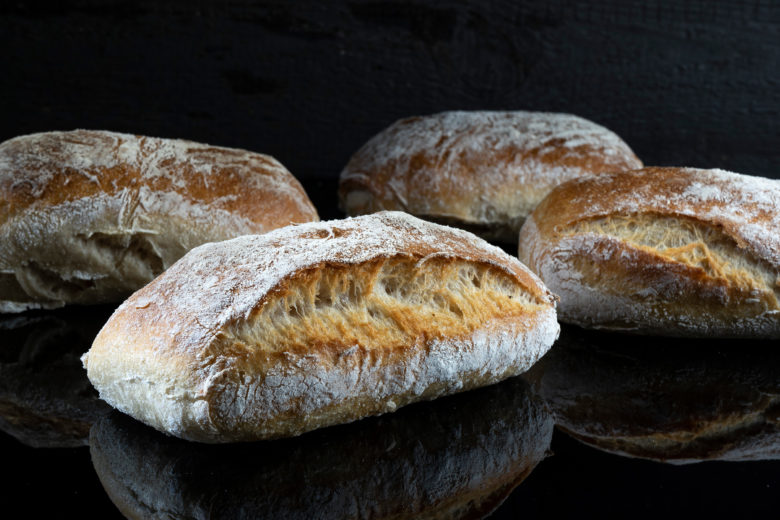BIGA Ciabatta
A crispy ciabatta with a soft crumb that stays fresh for a long time. This ciabatta doesn’t derive its taste from sourdough, as usual, rather it comes from an all too often forgotten pre-dough – the BIGA. This firm pre-dough variation comes from Italy and is usually indicated with a hydration of 45-60% (TA of 145-160). The Biga creates a more intense flavor with a delicately chipped and long-lasting crust.
The production is easy, uncomplicated, and very flexible around timing- exactly the ticket for novices in bread baking. A big advantage of this pre-dough is the long time span with which it can be worked. Thus, the Biga can first be left for several hours at room temperature and then stored in the refrigerator until ready to use.
It’s a shame that I neglected the Biga in the last few years.
Receipe
For a dough weight of 1762g / c. 20 pieces, each 88g of dough
Total recipe
| 750g | Wheat flour 550/700 | 75% |
| 402g | Pre-dough; Biga (250g Wheat flour/550 or W700, 150g water & 2g yeast) | 25% (of the total flour amount) |
| 550g | Water | 70% (including Biga) |
| 20g | Salt | 2% |
| 20g | Olive oil | 2% |
| 10g | Yeast | 1% |
| 10g | Malt /Honey | 1% |
BIGA pre-dough
| 250g | Wheat flour Type 550/700 |
| 150g | Water 10°C |
| 2g | Yeast |
- Dissolve the yeast in water
- Then mix in the wheat flour in the mixer until a smooth dough forms (4 minutes on slow)
- Cover and allow to mature for 12 hours at a cool room temperature (15-17°C)
- Should the pre-dough mature longer than 12 hours, it should be moved to the refrigerator at 4°C after 6 hours. There it can be held for up to 72 hours.
Main dough
| 750g | Wheat flour Type 550/700 |
| 450g | Water 10°C |
| 100g | Water 10°C (this water amount is added only after the sough has completely released from the side of the mixing bowl) |
| 20g | Olive oil |
| 20g | Salt |
| 10g | Yeast |
| 10g | Honey |
Production
- Mix all the ingredients (except the second 100g of water & the olive oil) slowly for 6 minutes in the mixer and 6-8 minutes at a fast speed. Once the dough has completely released from the side of the mixing bowl, the remaining water and the olive oil are added. Then the dough is once again kneaded until smooth (c. 3 minutes).
- After making the dough, place it in an oiled dough tub.
- Fold after 20/40 minutes.
- After the last dough fold, the dough continues to rise for 90-120 minutes at room temperature.
- To work up, the dough is turned out onto a floured work surface. Then using a dough spatula, the desired sizes of dough are removed and placed in a linen cloth to proof (they can actually be placed immediately on a baking tray as well).
- Final proof c. 30-45 minutes
- The dough is baked at 240°C with steam.
- Baking time of about 15-17 minutes.








